I was trying to perform image segmentation using color space. For example, rustic region. I wasn't sure how to select the boundaries for cv2.inRange().
img = cv2.imread(file)
img_hsv=cv2.cvtColor(img, cv2.COLOR_BGR2HSV)
lower_bound = np.array([0,70,70])
upper_bound = np.array([20,200,150])
mask0 = cv2.inRange(img_hsv, lower_bound, upper_bound)
lower_bound = np.array([170,70,70])
upper_bound = np.array([180,200,150])
mask1 = cv2.inRange(img_hsv, lower_bound, upper_bound)
# add both masks
mask = mask0+mask1
output_img = cv2.bitwise_and(img,img,mask=mask)

